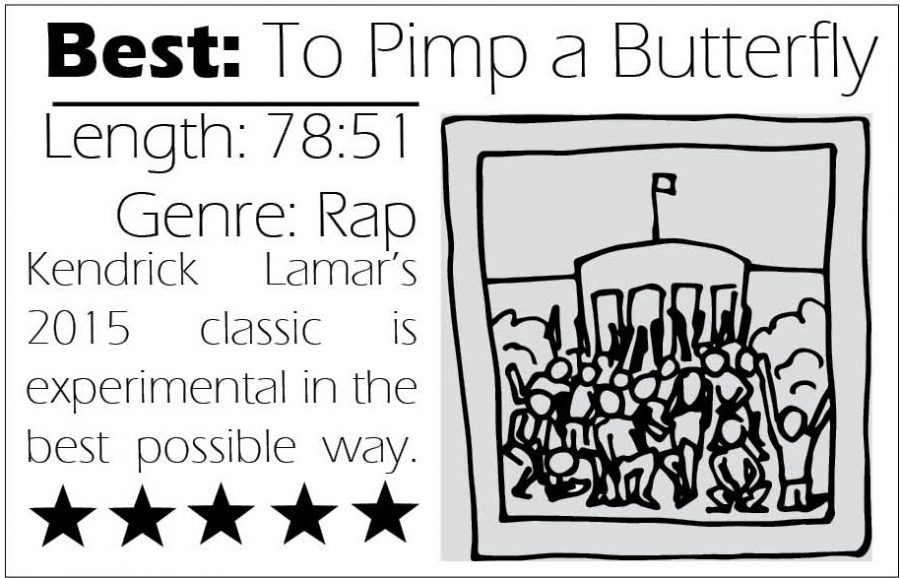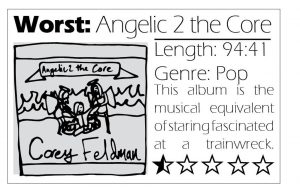To Pimp a Butterfly
March 22, 2020
Writing music is a difficult task, and that’s without trying to make it sound good or meaningful. Despite that, Kendrick Lamar managed to pull off this task with ease. Releasing the legendary To Pimp a Butterfly in 2015 to near-perfect scores, it’s no wonder that considered one of the best albums of all time, not just of the decade.
The 2010s were filled with boundary breaking mainstream music, and To Pimp a Butterfly is easily the best coming from the trend of thoughtfulness. Every song is filled with intelligent critism of society, discussing—amongst other concepts—racism and mental illness. Though many other albums cover these, none are as cohesive as what Lamar produced.
This cohesion is quite an incredible feat, considering how genre-bending the album gets. Though it’s certainly a rap album, songs frequently feature soul, funk, and jazz instead of opting for simpler beats. “For Free?”, for example, has intense jazz piano and drums lines under the vocals, such that the instrumental could be likened to John Coltrane’s avant-garde jazz.
So much is discussed that it’s difficult to describe the album as a whole. I could point out the morbidity found in some tracks like “u,” but I feel nothing in To Pimp a Butterfly compares in substance to “Mortal Man,” in which Lamar looks for guidance by speaking with an interview of the late Tupac Shakur.
The album is simply so dense, from the music to the themes, that it demands the listener’s full attention. Lamar has said that he intended for To Pimp a Butterfly to be analyzed at an academic level, and I’d highly suggest giving it a listen and seeing how impactful it is.




